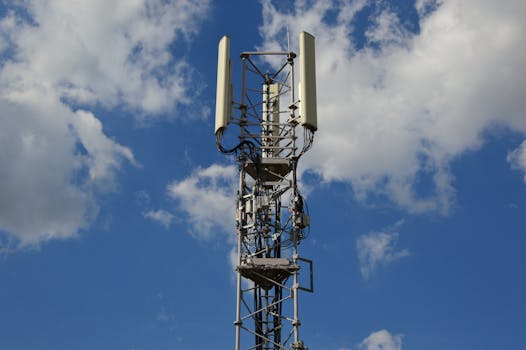
GEO satellites, or Geostationary Earth Orbit satellites, are a type of satellite that orbits the Earth at an altitude of approximately 36,000 kilometers, allowing them to remain stationary relative to a fixed point on the planet. GEO satellites have been a cornerstone of modern telecommunications, providing a wide range of services including television broadcasting, internet connectivity, and mobile communications. At the beginning of the GEO satellites era, the technology was primarily used for television broadcasting, but over time, its applications have expanded to include a broad range of telecommunications services.
The technology behind GEO satellites is complex and involves a number of key components, including the satellite itself, the launch vehicle, and the ground control system. The satellite is equipped with a range of instruments and antennas, including transponders, which are used to receive and re-transmit signals. The launch vehicle is used to propel the satellite into orbit, and the ground control system is used to monitor and control the satellite’s operations. One of the key advantages of GEO satellites is their ability to provide global coverage, allowing them to reach remote and underserved areas that are not accessible through traditional telecommunications infrastructure.
In addition to their technical capabilities, GEO satellites have also had a significant impact on the telecommunications industry, enabling the provision of a wide range of services and applications. These include television broadcasting, where GEO satellites are used to distribute channels and programs to cable and satellite providers; internet connectivity, where GEO satellites are used to provide broadband access to remote and underserved areas; and mobile communications, where GEO satellites are used to provide voice and data services to mobile operators. Furthermore, GEO satellites are also used for navigation, weather forecasting, and Earth observation, among other applications.
Despite the many benefits of GEO satellites, there are also some challenges and limitations associated with the technology. One of the key challenges is the high cost of launching and operating a GEO satellite, which can make it difficult for some organizations to access the technology. Additionally, GEO satellites are also subject to interference and signal degradation, which can impact their performance and reliability. However, GEO satellites continue to play a vital role in modern telecommunications, and their applications are likely to continue to expand in the future.
The future of GEO satellites is likely to be shaped by a number of factors, including advances in technology, changes in market demand, and the development of new applications and services. One of the key trends that is likely to impact the GEO satellite industry is the growing demand for high-throughput satellites, which are designed to provide high-speed internet connectivity and other broadband services. Another trend that is likely to shape the future of GEO satellites is the increasing use of small satellites, which are smaller and less expensive than traditional GEO satellites and can be used to provide a wide range of services and applications.
In conclusion, GEO satellites are a critical component of modern telecommunications, providing a wide range of services and applications that are essential to modern life. From television broadcasting to internet connectivity and mobile communications, GEO satellites play a vital role in connecting people and communities around the world. As the technology continues to evolve and improve, it is likely that GEO satellites will remain a key part of the telecommunications landscape for many years to come.
Moreover, the impact of GEO satellites on the environment and society as a whole is also significant. The use of GEO satellites has enabled the provision of critical services such as weather forecasting, disaster response, and environmental monitoring. Additionally, GEO satellites have also played a key role in promoting economic development and social inclusion, particularly in remote and underserved areas. As the demand for GEO satellites continues to grow, it is essential to consider the potential environmental and social impacts of the technology and to develop strategies for mitigating any negative effects.
Finally, the role of GEO satellites in promoting international cooperation and collaboration is also worth noting. The use of GEO satellites has enabled countries to work together on a range of issues, including disaster response, environmental monitoring, and economic development. As the global community continues to face a range of challenges and threats, the importance of international cooperation and collaboration is likely to grow, and GEO satellites are likely to play a key role in facilitating this cooperation.
Overall, GEO satellites are a critical component of modern telecommunications, and their impact on the industry and society as a whole is significant. As the technology continues to evolve and improve, it is likely that GEO satellites will remain a key part of the telecommunications landscape for many years to come, providing a wide range of services and applications that are essential to modern life.


